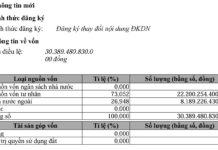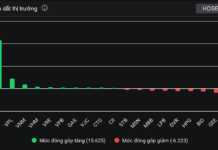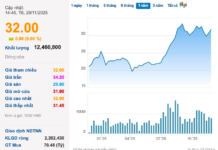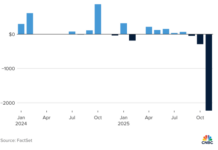
Rahul Mathur has been a fan of the BluSmart app – an electric ride-hailing service – since its early days. BluSmart has been his preferred choice for the past two years as he built a startup in Delhi, India, and he also favors the company as an investor. He keeps a close eye on the industry.
He loved BluSmart so much that he was invited to the Prive customer group, a special program for their most loyal customers, which is by invitation only.
However, recently, Rahul Mathur has been having a hard time booking rides through the app.
“Even as a Prive member with priority access, there are times when I don’t get a ride, even with advance booking,” he shared.

BluSmart cars on the streets of India.
In India, electric ride-hailing companies like BluSmart are slowly chipping away at the market share once dominated by Ola and Uber. BluSmart’s all-electric fleet appeals to environmentally conscious customers, and they also offer the convenience of their app: no cancellations and no surge pricing.
BluSmart cars are known for their cleanliness and good maintenance, with complimentary water and mints always available for passengers. These features have helped BluSmart gain a loyal customer base in New Delhi and Bengaluru (also known as India’s Silicon Valley, home to many leading tech companies). BluSmart plans to expand to Mumbai, India’s economic hub, by the end of next year.

BluSmart’s all-electric fleet is a plus for many customers.
In 2022, BluSmart set a goal of having 100,000 electric vehicles on the road by 2025. Last year, they scaled back their target: by the beginning of this year, they aimed for about 10,000 electric vehicles – currently, they have only 8,000.
BluSmart has not provided an explanation, but industry experts believe that electric vehicle manufacturers are struggling to keep up with the rising demand for cars. The growth of the electric ride-hailing industry has slowed down because, essentially, they don’t have enough cars to meet demand.
There are only “one or two [electric vehicle] manufacturers in the market, and they are not running at full capacity,” said Shivani Palepu, a senior analyst at Gartner, a consulting firm specializing in transportation.
She added, “No matter how many MOUs [memorandums of understanding] are signed or how much collaboration there is, supply is still an issue.”
India is one of the locations where VinFast is building an electric vehicle manufacturing facility. Construction began in the state of Tamil Nadu in February of this year. According to the latest updates, the factory is currently being equipped and may become operational as early as next year. This factory has an initial investment of $500 million and a maximum capacity of 150,000 vehicles per year.

Tata Motors is one of the few domestic manufacturers of electric cars in India.
Ride-hailing companies typically rely on cars owned by their registered drivers; most of these are gasoline or diesel-powered. However, electric ride-hailing companies must operate differently: they have to purchase their own fleets.
This insight was shared by Pawan Mulukutla, a director at the World Resources Institute India.
Electric vehicles usually have a range that is only about 50-60% of that of internal combustion engine vehicles, and their performance is about 30% lower. In India, electric cars are about 50% more expensive than their gasoline counterparts.
BluSmart and similar companies overcome this challenge by maintaining their own electric fleets. This also gives them a cost advantage: lower prices due to bulk purchases and lower interest rates for green initiatives. Currently, BluSmart has about 5,000 charging ports and a dedicated team for maintenance.

BluSmart operates its own charging stations.
Ola and Uber have also launched electric ride-hailing services to meet the Indian government’s green transformation requirements and their own climate goals. Ola has experimented but failed, while Uber has partnered with local electric fleets like Lithium Urban Technologies, Everest Fleet, and Moove to have a fleet of 25,000 cars in India by 2026.
In June 2023, Uber invested $20 million in Everest, the largest electric ride-hailing company in India, with 19,000 cars manufactured by Tata Motors.
Anirudh Damani, a senior manager at the investment fund Artha Venture Fund, believes that the supply of electric vehicles will soon stabilize, “especially with strong support from the Indian government.” Artha Venture Fund has invested about $2 million in Everest Fleet.
Mr. Anirudh Damani predicts that, in the future, battery rental services will become popular, with fixed fees based on distance traveled. He states, “When [electric ride-hailing companies] become the largest customers in India, electric vehicle manufacturers will line up to supply Everest, similar to what happened with Southwest Airlines in the aviation industry.”

Uber partners with a third-party company for its electric fleet.
The electric ride-hailing industry is flush with investment. BluSmart is currently valued at approximately $245 million and raised $24 million from over 20 investors in May, including major and reputable names like Softbank. BluSmart expects to raise $100 million soon. Along with BluSmart, two other startups in the electric ride-hailing space, Snap-E in Kolkata and Shoffr in Bengaluru, have successfully raised funds.
However, with a limited number of manufacturers and increasing competition, electric vehicles for this industry are becoming scarce. Tata Motors, a major Indian car manufacturer, has an order book that exceeds its maximum production capacity. However, the lack of incentives for electric ride-hailing vehicles is also hindering the speed and number of electric vehicles being produced.

The Tata X Pres-T is a popular choice for electric ride-hailing services.
Shivani Palepu of Gartner believes that “manufacturers like Tata are not focused on the taxi segment. They make most of their money in the mass market. And there are no regulations or policies targeting the taxi market. So, of course, there are no incentives.”
Some smaller ride-hailing companies rely solely on one manufacturer. Snap-E, based in Kolkata, has a fleet of 600 vehicles, mostly the Tata XPres-T model, and aims to have 10,000 cars within five years. Meanwhile, Tata has signed deals with larger companies and is the sole supplier to Snap-E.
Shoffr, which started operating in 2022 with just two cars purchased from BYD (China), now has over 100, all BYD E6 models.
Relying on a single model carries a risk: if something goes wrong, the entire fleet may be affected. In Shoffr’s case, “there is a risk that BYD will not be allowed to build a factory in India. If that happens, how can you ensure that you will get your cars?”
In July, the Indian government rejected BYD’s proposal to build a $1 billion factory in the country.

The BYD M6 is an all-electric MPV.
Kislay Verma, co-founder of Shoffr, said the company has a good relationship with BYD, and the company plays a significant role in the electric ride-hailing industry due to “China’s position in the electric vehicle supply chain, with mineral resources, vehicle manufacturing capabilities, and a large number of manufacturers.”
However, Shoffr is also open to using cars from other manufacturers: “We will experiment with different models as they enter the market.” This year, Indian automaker Mahindra plans to launch an electric car with BYD batteries, and Shoffr is eager to try it.

Shoffr cars on the streets of India.
Initially, BluSmart used Tata cars, but they have recently added vehicles from Mahindra, Hyundai, and MG. Using multiple car models also has its challenges, such as finding ways to synchronize infrastructure, training maintenance staff, and ensuring that drivers can use the cars effectively.
Mitesh Shah, CFO of Ola and founder of the investment fund Inflection Point Ventures, has invested in both BluSmart and Snap-E. He believes that “this market will never go in the direction of ‘the winner takes it all.'”
He thinks that companies will succeed in different regions and that BluSmart’s slow growth is not a problem. He said, “It’s all about operating the cars efficiently and ensuring that the growth rate doesn’t turn negative.”
Mitesh Shah also stated, “I truly believe that, for the next few years, the issue will remain with supply. But will the situation change when manufacturers have enough production capacity? Definitely, but it will take time.”
Unlocking India’s Rice Exports: Exploring the Impact
The Indian government’s decision to lift the ban on common rice exports has resulted in a $24/ton decrease in Vietnam’s rice export prices in October 2024 compared to the previous month. However, as of now, Vietnam’s 5% broken rice remains more expensive than that of Thailand by $16/ton and India by $46/ton.









































